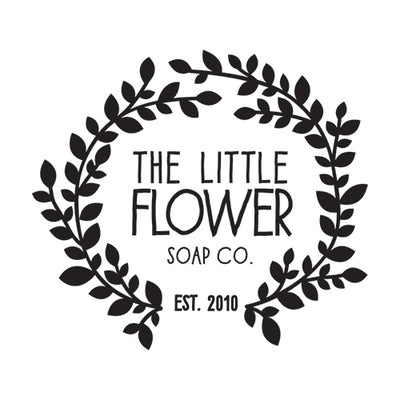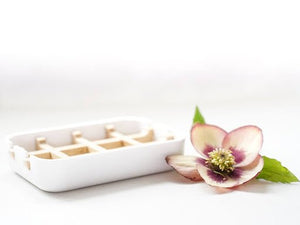In an era where sustainability is becoming increasingly important, biodegradable products are gaining traction among eco-conscious consumers. A biodegradable soap dish is one such product that not only serves a practical purpose but also contributes to reducing plastic waste. This article delves into the various aspects of biodegradable soap dishes, including their benefits, materials, maintenance, and how they compare to traditional soap dishes.
Understanding Biodegradable Soap Dishes
Biodegradable soap dishes are designed to decompose naturally over time, unlike their plastic counterparts that can take hundreds of years to break down. These soap dishes are made from materials that are environmentally friendly and can return to the earth without leaving harmful residues. Understanding the components and benefits of biodegradable soap dishes is essential for making informed purchasing decisions.
What Makes a Soap Dish Biodegradable?
A soap dish is considered biodegradable if it is made from organic materials that can be broken down by microorganisms. Common materials used in biodegradable soap dishes include bamboo, cornstarch, and recycled paper pulp. These materials are not only sustainable but also provide a stylish and functional way to hold soap.
For a product to be labeled as biodegradable, it should decompose within a specific timeframe when exposed to natural environmental conditions. This timeframe can vary based on the material and the environment in which it is placed. Generally, biodegradable soap dishes can break down within a few months to a couple of years, depending on the conditions.
Benefits of Using Biodegradable Soap Dishes
-
Environmental Impact: The most significant advantage of biodegradable soap dishes is their reduced environmental footprint. By choosing biodegradable options, consumers help decrease plastic pollution and promote a healthier planet.
-
Health Benefits: Many biodegradable soap dishes are made from natural materials that do not leach harmful chemicals into the environment or onto the soap, making them a safer choice for households.
-
Durability: Contrary to popular belief, biodegradable soap dishes can be quite durable. Many are designed to withstand moisture and can last for an extended period, making them a practical choice.
-
Stylish Designs: Biodegradable soap dishes come in various designs and finishes, allowing consumers to choose options that complement their bathroom decor while being eco-friendly.
Materials Used in Biodegradable Soap Dishes
The choice of material plays a crucial role in the functionality and biodegradability of soap dishes. Here are some of the most common materials used in biodegradable soap dishes:
Bamboo
Bamboo is a popular choice for biodegradable soap dishes due to its rapid growth and renewability. It is naturally resistant to mold and mildew, making it an excellent option for wet environments like bathrooms. Bamboo soap dishes often feature slats or drainage holes to allow excess water to escape, preventing soap from becoming soggy.
Additionally, bamboo is lightweight yet sturdy, providing a durable option that can withstand daily use. Its natural aesthetic adds a touch of elegance to any bathroom setting.
Cornstarch
Cornstarch is another innovative material used in the production of biodegradable soap dishes. It is derived from the starch of corn kernels and can be molded into various shapes and sizes. Cornstarch soap dishes are often compostable, meaning they can be added to compost bins after their useful life.
This material is particularly appealing for those looking for a more plastic-like feel without the environmental consequences. Cornstarch soap dishes are lightweight, making them easy to handle and transport.
Recycled Paper Pulp
Recycled paper pulp is an eco-friendly option that utilizes waste paper products to create biodegradable soap dishes. This material is often molded into unique shapes and designs, providing an artistic flair to bathroom decor. The use of recycled materials reduces the demand for new resources, making it a sustainable choice.
While recycled paper pulp soap dishes may not be as water-resistant as bamboo or cornstarch options, they can still serve their purpose effectively, especially in dry environments. They are also fully biodegradable, breaking down naturally without harming the environment.
How to Maintain a Biodegradable Soap Dish
Maintaining a biodegradable soap dish is crucial to prolonging its life and ensuring it remains functional. Here are some tips for proper care:
Regular Cleaning
To keep a biodegradable soap dish in good condition, it should be cleaned regularly. Use mild soap and warm water to wash the dish, avoiding harsh chemicals that could damage the material. After washing, rinse thoroughly and allow it to dry completely before placing soap back on it.
Regular cleaning not only helps maintain the appearance of the soap dish but also prevents the buildup of soap scum and bacteria, ensuring a hygienic environment.
Proper Drying Techniques
Proper drying is essential for biodegradable soap dishes, especially those made from bamboo or cornstarch. After cleaning, ensure that the dish is placed in a well-ventilated area to dry completely. Avoid leaving it in standing water, as prolonged exposure can lead to warping or degradation of the material.
Some users may choose to periodically oil bamboo soap dishes with food-grade mineral oil to maintain their appearance and prevent cracking. This step is not necessary for all biodegradable materials but can enhance the longevity of bamboo options.
Comparing Biodegradable Soap Dishes to Traditional Soap Dishes
When considering a switch to biodegradable soap dishes, it is essential to understand how they compare to traditional options. Traditional soap dishes are often made from plastic, ceramic, or metal, each with its own set of advantages and disadvantages.
Environmental Impact
Traditional soap dishes, particularly those made from plastic, contribute significantly to environmental pollution. Plastic can take hundreds of years to decompose, leading to increased landfill waste and ocean pollution. In contrast, biodegradable soap dishes break down naturally, reducing their environmental footprint.
Moreover, the production of traditional soap dishes often involves the use of non-renewable resources, whereas biodegradable options utilize sustainable materials, promoting a circular economy.
Durability and Functionality
While traditional soap dishes may offer greater durability in some cases, many biodegradable options are designed to withstand moisture and daily use effectively. Bamboo and cornstarch soap dishes, for instance, can be surprisingly resilient, providing a practical alternative to plastic or ceramic dishes.
However, it is essential to note that biodegradable soap dishes may not last as long as traditional options, particularly in highly humid environments. Consumers should weigh the importance of sustainability against longevity when making their choice.
Where to Buy Biodegradable Soap Dishes
Biodegradable soap dishes are becoming increasingly available in various retail outlets, both online and in physical stores. Here are some options for purchasing these eco-friendly products:
Online Retailers
Many online retailers specialize in eco-friendly products, offering a wide range of biodegradable soap dishes. Websites like Amazon, Etsy, and specialized eco-friendly stores provide numerous options, allowing consumers to compare prices, materials, and designs easily.
Shopping online also enables consumers to read reviews and ratings from other buyers, helping them make informed decisions based on real experiences.
Local Eco-Friendly Stores
Many cities have local stores that focus on sustainable living and eco-friendly products. Visiting these stores can provide consumers with the opportunity to see and feel the products before purchasing. Additionally, supporting local businesses contributes to the community and promotes sustainable practices.
Some local stores may also offer workshops or events that educate consumers about sustainable living, providing valuable insights into eco-friendly choices.
Conclusion
Biodegradable soap dishes represent a significant step towards reducing plastic waste and promoting sustainable living. By choosing biodegradable options made from materials like bamboo, cornstarch, or recycled paper pulp, consumers can enjoy the benefits of functionality and style while contributing to a healthier planet.
As awareness of environmental issues continues to grow, the demand for biodegradable products is likely to increase. Making the switch to a biodegradable soap dish is a simple yet impactful way to embrace sustainability in everyday life.

